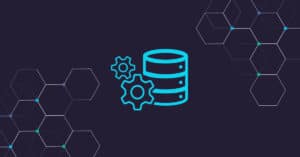The Major Differences between Stitch ETL and K3 ETL
Is your organization considering an ETL solution for its data needs? Here is a high-level comparison of the Stitch ETL and K3 ETL platforms to determine which option is a better fit.
- Ease of use: Stitch ETL is a higher-code environment; K3 visualizes and normalizes data with no coding required.
- Scalability: Stitch ETL is not a scalable solution since it charges per data row; K3 ETL is highly scalable thanks to a low-code environment at one price.
- Data deployment: Stitch ETL offers hosted-cloud and private-cloud deployments; K3 ETL offers hosted-cloud, private-cloud and on-premises deployments.
- Data integration: Stitch ETL is capable of pulling data to a downstream warehouse; K3 ETL can drive data to virtually any endpoint.
- Data orchestration: Stitch ETL uses a basic chronological process that lacks logic; K3 ETL allows the user to configure logic into the data flow.
- Data security: Stitch ETL is a multi-tenant solution; K3 ETL is single-tenant solution.
THE BIG TAKEAWAY:
- Stitch is a higher-code environment that is extremely expensive to scale.
- Stitch is limited to the cloud and does not offer on-premises data capabilities.
- Stitch’s data orchestration lacks logic and since it’s a multi-tenant solution. If you are concerned about data security or want to access data in the data store Stitch is not the right solution.
Stitch and K3 Overview
Stitch Data Loader is a cloud-based platform for ETL. Stitch enables companies to move records from SaaS applications and databases into data warehouses and data lakes, where it can be analyzed with business intelligence tools. Stitch is a Talend company and is part of the Talend Data Fabric.
K3 Enterprise is a low-code integration application with hundreds of API adapters. It is a ready-to-go-solution that eliminates the headache of a high-code environment. K3 ETL doesn’t require an army of IT professionals so it saves time and money. It’s built to handle legacy archetypal data forms, non-conforming data sources and also features K3 data prep and K3 data load functionalities. With K3 ETL, you can visualize your data, map it and then flow it to files, APIs, databases, data warehouses, and data lakes like Redshift or Snowflake.
Let’s take a more in-depth look at how Stitch ETL and K3 ETL compare side-by-side.
CAPABILITIES AND FUNCTIONAL COMPARISON IN-DEPTH LOOK
K3
Stitch
EASE OF USE
K3 ETL requires no coding or programming expertise. Whether you’re flowing data into Snowflake, Amazon Redshift or legacy databases, K3 is an intuitive, out-of-the-box solution.
Stitch ETL is a higher-code data loader that is limited to cloud data warehouses such as Snowflake, Amazon Redshift and Google BigQuery.
SCALABILITY
K3 ETL is optimized for scalability, and the low-code environment makes it accessible to non-technical users and experienced developers alike. With K3, you get one solution with one price.
Stitch is not a scalable solution due to its higher-code environment and pricing strategy. Users are charged per data row, which makes it challenging to estimate costs and very expensive for large enterprises with a lot of data.
DATA DEPLOYMENT
K3 ETL offers hosted-cloud, private-cloud and on-premises deployments. No matter where the data starts, K3 can connect and flow it downstream to your destination of choice.
Stitch ETL is limited to hosted-cloud and private-cloud deployments. It does not offer on-premises deployment.
DATA INTEGRATION
K3 can drive data to virtually any endpoint. For companies relying solely on Redshift or Snowflake, K3 makes it possible to expand to other options later.
Stitch focuses on driving data to Redshift and Snowflake endpoints.
DATA ORCHESTRATION
K3 ETL allows the user to configure logic into the data flow. This means that data orchestration is action-based rather than simply time-based.
Stitch ETL uses a basic chronological process that lacks logic. “Chron jobs” work well for scheduling, but are considered the lowest level of data orchestration.
DATA SECURITY
K3 ETL is a single-tenant solution backed by a data privacy guarantee. Organizations are able to trust secure hardware being used by a limited number of people.
Stitch ETL is a multi-tenant solution without a data privacy guarantee. While other tenants won’t see your data, multiple users (not associated with your organization) are allowed on the same database, which compromises data security.
K3 IS BEST FOR EASE OF USE, SCALABILITY AND SECURITY
Stitch is a powerful ETL tool, but it’s limited to cloud data warehouses and low-level data orchestration with some security concerns. K3 is a powerful, low-code ETL tool that integrates with legacy and new applications alike, regardless of where they reside—in the cloud, private cloud or on-premises. Even for companies relying solely on Redshift or Snowflake, K3 offers the flexibility to expand to other options, which is crucial in an ever-changing digital landscape. Setup a free demo to see how K3 ETL can empower your data transformation.
RECOMMENDED RESOURCES

How to Use Change Data Capture for Database Replication
How on earth do you get data out of a database? How do we do this regularly, programmably and in an automated way to support

K3 Connectors: Prebuilt ETL Adapters
In modern software development, application integrations are king. Your data can do so much more when you leverage the power of other pre-built enterprise apps.

What Is Data Warehouse ETL?
Data Warehouse ETL is a series of processes: Extract data from across an organization; Transform data for consumption; Load data to a relational or non-relational



